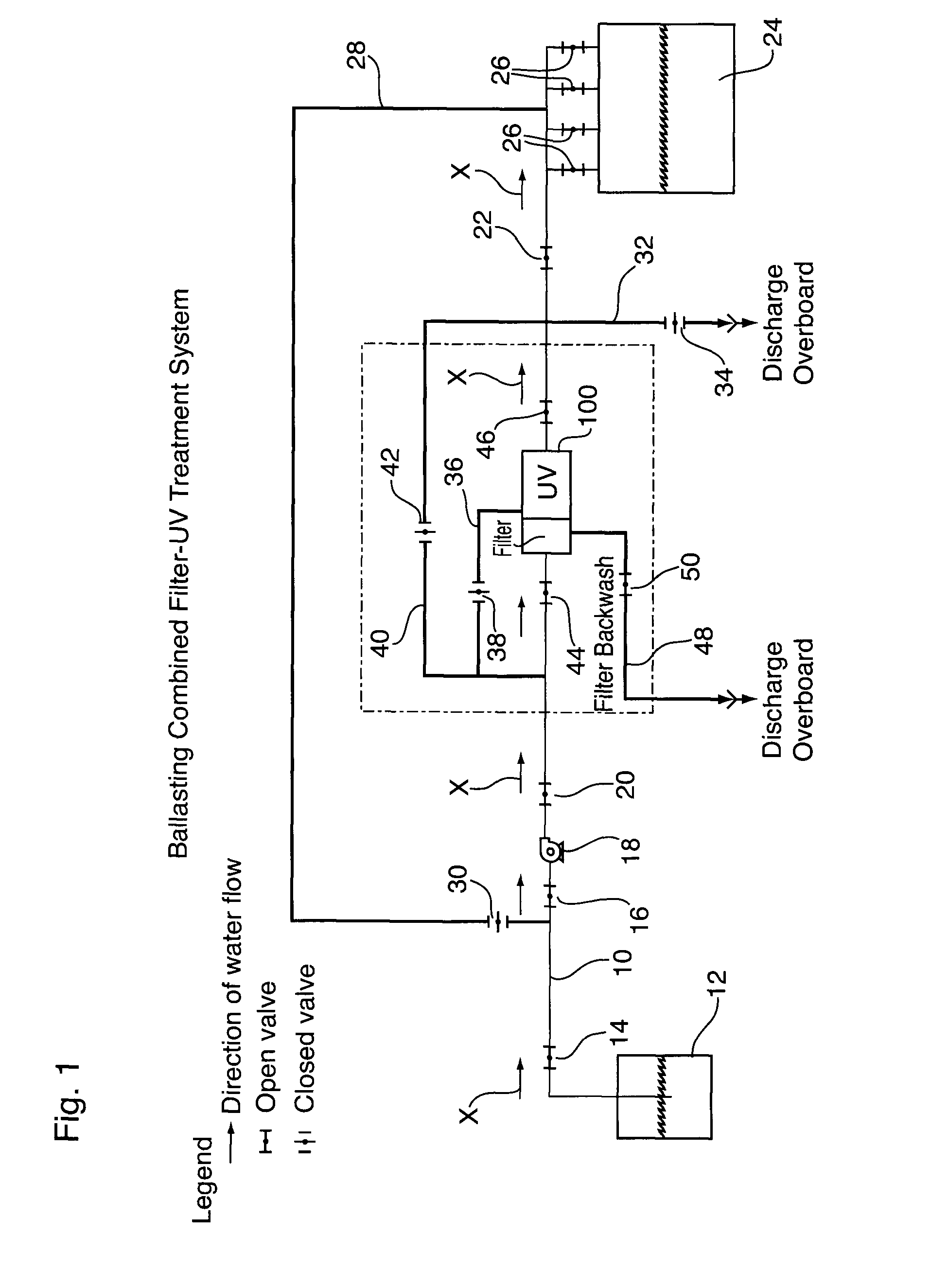Fluid treatment system
a treatment system and flue gas technology, applied in the direction of treatment water nature, separation process, vessel construction, etc., can solve the problems of high capital cost of reactors, difficult access, and manifested problems
- Summary
- Abstract
- Description
- Claims
- Application Information
AI Technical Summary
Benefits of technology
Problems solved by technology
Method used
Image
Examples
first embodiment
[0130]In a first embodiment, the method comprises the steps of:
[0131]cutting the first plumbing line;
[0132]splitting an upstream cut portion of the first plumbing line into a main plumbing line and a bypass plumbing line;
[0133]connecting the main plumbing line to the first fluid inlet;
[0134]connecting the bypass plumbing line to the second fluid inlet;
[0135]connecting a downstream cut portion of the first plumbing line to the fluid outlet;
[0136]installing the first valve element in the main plumbing line upstream of the fluid treatment system; and
[0137]installing the second valve element in the bypass line upstream of the fluid treatment system.
second embodiment
[0138]In a second embodiment where the fluid separation section of the fluid treatment system comprises a backwash element, the method comprises the steps of:
[0139]cutting the first plumbing line;
[0140]splitting an upstream cut portion of the first plumbing line into a main plumbing line and a bypass plumbing line;
[0141]connecting the main plumbing line to the first fluid inlet;
[0142]connecting the bypass plumbing line to the second fluid inlet;
[0143]connecting a downstream cut portion of the first plumbing line to the fluid outlet;
[0144]connecting discharge portion of the backwash element to a overboard discharge plumbing line;
[0145]installing the first valve element in the main plumbing line upstream of the fluid treatment system;
[0146]installing the second valve element in the bypass line upstream of the fluid treatment system; and
[0147]installing the backwash valve element in the overboard discharge plumbing line.
third embodiment
[0148]In a third embodiment where it is desired to be able to bypass the fluid treatment system entirely, the method comprises the steps of:
[0149]cutting the first plumbing line;
[0150]splitting an upstream cut portion of the first plumbing line into a main plumbing line, a first bypass plumbing line and a second bypass plumbing line;
[0151]connecting the main plumbing line to the first fluid inlet;
[0152]connecting the first bypass plumbing line to the second fluid inlet;
[0153]connecting a downstream cut portion of the first plumbing line to the fluid outlet;
[0154]connecting the second bypass plumbing line to the downstream cut portion of the first plumbing line
[0155]installing the first valve element in the main plumbing line upstream of the fluid treatment system;
[0156]installing the second valve element in the first bypass line upstream of the fluid treatment system; and
[0157]installing the third valve element in the second bypass line.
[0158]With respect to each of the above-mentio...
PUM
| Property | Measurement | Unit |
|---|---|---|
| Flow rate | aaaaa | aaaaa |
Abstract
Description
Claims
Application Information
 Login to View More
Login to View More - R&D
- Intellectual Property
- Life Sciences
- Materials
- Tech Scout
- Unparalleled Data Quality
- Higher Quality Content
- 60% Fewer Hallucinations
Browse by: Latest US Patents, China's latest patents, Technical Efficacy Thesaurus, Application Domain, Technology Topic, Popular Technical Reports.
© 2025 PatSnap. All rights reserved.Legal|Privacy policy|Modern Slavery Act Transparency Statement|Sitemap|About US| Contact US: help@patsnap.com



